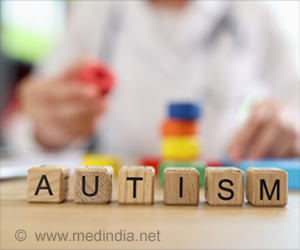Researchers from the University of Virginia (UVa) and Reckitt-Benckiser (LON: RB) have found that getting a common cold is all very easy
Researchers from the University of Virginia (UVa) and Reckitt-Benckiser (LON: RB) have found that getting a common cold is all very easy thanks to the amount of viral contamination left behind by a cold sufferer. The study was presented at the annual Interscience Conference on Antimicrobial Agents and Chemotherapy (ICAAC).
During daily activities, adults infected with the cold virus easily transferred the virus to 35 percent of the surfaces touched, according to the study. Moreover, it was found that the virus was effortlessly and significantly transferred to an uninfected person by fingertips touching the contaminated surfaces, even 18 hours after initial contamination, according to Owen Hendley, M.D., lead study investigator and Professor of Pediatrics in the Division of Pediatric Infectious Diseases at the UVa Health System.After an overnight stay, adults infected with rhinovirus left behind virus on about a third of the objects and surfaces they touched in their daily activities. For example, the most frequently contaminated objects in 15 individually occupied hotel rooms were door handles (seven out of 14 rooms) and pens (six out of 14 rooms), followed by light switches, TV remote controls and faucets (each six out of 15 rooms), and telephones (five out of 15 rooms). Remarkably, the investigators noted that only one out of 10 rooms had a contaminated toilet handle.
Overall, rhinovirus contamination of the sampled surfaces (10 each in of 15 rooms) ranged from 80 percent contaminated test surfaces in three rooms to 30-50 percent in 7 rooms, to 10 percent in 3 rooms and none in two rooms. The average contamination rate was 35 percent.
Rates of acquiring rhinovirus from a contaminated surface during daily life activities, such as phone calls or turning on the light, were significant, averaging 47 percent in the study (28/60 touches, p = 0.07). However, surfaces contaminated for just one hour yielded a higher rhinovirus transfer rate of 60 percent (18 of 30 touches) than those contaminated for 18 hours, which yielded a transfer rate of 33 percent (10 of 30 touches), (p =0.07).
Although transmission of rhinovirus infection by way of surfaces may not be efficient, it may be important because virus remains available for transfer to fingertip for at least one day. There are no antiviral drugs available to cure the common cold. Therefore prevention is important. The Centers for Disease Control (CDC) advise health educators and consumers about how to prevent infectious diseases through their Ounce of Prevention campaign. Among the low-cost steps to stop infectious diseases, the CDC recommends cleaning hands often and routinely cleaning and disinfecting surfaces. People should regularly wash their hands after shaking hands with anyone with a cold or touching environmental objects likely contaminated with nasal secretions. Commonly touched surfaces, such as those identified in this work, should be disinfected routinely with a disinfectant, such as Lysol(R) Disinfectant Spray.
Rhinoviruses are responsible for about half of all common colds in both adults and children, tallying approximately 500 million colds annually in the United States. The average child can expect to have four to eight rhinovirus colds per year and adults three to five infections.
Advertisements
"Most people know about the need for good hygiene, particularly when interacting with cold sufferers. What they may not be aware of, and the study shows, is the need for good personal and surface hygiene even when an ill person is not present, because germs can survive on surfaces long after a person is gone," said co-author Joe Rubino, MA, Director of Global Surface Care, Research and Development, Support Sciences, Reckitt-Benckiser, Inc. Montvale, N.J., which supported the study.
Advertisements
To test contamination in the study, 15 adults exhibiting symptoms of rhinovirus infection remained awake in a hotel room for at least five hours prior to sleeping overnight, followed by at least two hours of activity in the room before a morning checkout. All were asked to perform normal activities. Participants received food via room service and no other individuals entered the rooms.
At check-in, participants blew their noses with a facial tissue immediately after entering the room and, then, investigators tested participant fingertips for rhinovirus contamination. At check-out, the participants identified objects that they had touched and the frequency. After departure, researchers tested 10 objects for residual virus.
To test viral transfer from surface to fingertips, researchers collected vials of infectious nasal secretions from each participant at the study start. Then, two to four months after their colds ended, five of the same participants individually touched three contaminated surfaces in a hotel room. Participants were exposed to only their own infectious secretion, to which they had acquired immunity during their preceding infection.
Two sets of contaminated sites were used, with one set having spots allowed to dry for one hour and the second, overnight. Before touching any of the sites, participants washed their hands with Ivory(R) soap and water and then dried them with paper towels. Investigators then tested the participants' clean fingertips for virus. Then participants repeated the hand washing/drying procedure before using their fingertips to touch the three contaminated sites as instructed to simulate natural daily life activities. Following touching, the investigators tested the participants' fingertips for virus.
Throughout the study, investigators used the very sensitive RT-PCR technology to detect the rhinovirus virus, specifically the RNA genetic material. Hendley and Rubino's coauthors were Birgit Winther, M.D., Assistant Professor of Otolaryngology, and Kathleen Ashe, Laboratory and Research Specialist II, both at UVa, and Karen McCue, MS, Manager in Research & Development at Reckitt-Benckiser Inc.
ICAAC Presentation information: ICAAC Reference No.: V-1693 Popular Title: Contamination of Environmental Surfaces During Normal Daily Activities of Hotel Guests with Rhinovirus Colds Technical Title: Environmental Contamination with Rhinovirus and Transfer to Healthy Individuals by Daily Life Activity Day and Time of Presentation: Friday, Sept. 29th from 2:00 pm to 4:30 pm PT
Source-Eurekalert
RAS








